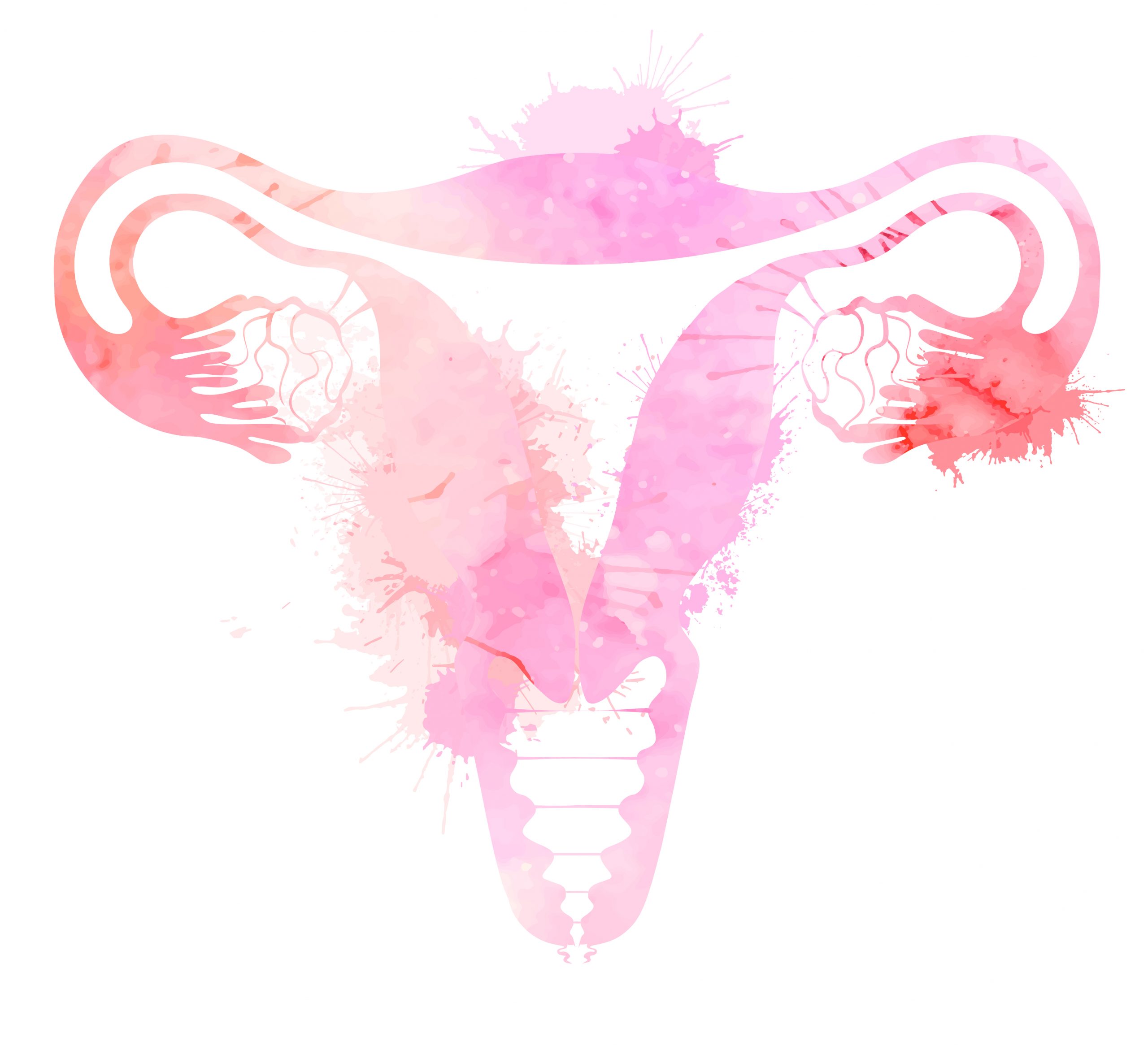How old wisdom about menstruation unlocks higher performance.
The Fight Against Erasing Women

Conservatives and feminists must unite against technocratic effacement.
Sometimes, internet weirdos cut closer to the heart of matters than more obviously housetrained writers.
Gender Acceleration: A Blackpaper is an anonymous 2018 essay that celebrates an imagined escape from “the horrid curse of being human.” It describes a tech-enabled unmooring of gender from reproduction that ultimately, it hopes, will enable us to triumph over our own nature:
trans women are technocapital producing itself outwardly into increasingly multitudinous configurations. Trans women as we know them now are the melding of technocapital with the human race and the expropriation of it towards its own ends…. Their flesh is how the machinery beneath infiltrates the human race. It breaks these lucky few free from the horrid curse of being human towards the lesbian autoproduction of demons.
This “downward cascade of gender fragmentation away from the binary and ultimately away from the human itself” is presented as an ultimate feminist victory: the dissolution of all constraint, and thus of even the residual masculinity contained in the abstract principle of order.
Gender Acceleration may be lurid, but it’s little more than a hyperbolic restatement of mainstream “intersectional” feminist doctrine. This doctrine has embraced as a key feminist aim the need to unmoor “woman” as an identity from biological givens. Emancipation looks like surgically feminized males celebrated as “Woman of the Year” while real females are celebrated for intentional childlessness. This is a literal realization of Gender Acceleration’s vision: the feminine “untethered from the reproductive logic of humanism,” with femininity “no longer in the service of the male as a machine to produce the future.”
This doctrine also embraces as liberatory Gender Acceleration’s “melding of technocapital with the human race.” It agitates for “sex worker rights,” or in other words for legitimating any and all incursions of the market into human sexuality, provided assurances are given on consent. It advocates extending commercial biomedicine into ever more intimate dimensions of human reproduction. And it frames as feminist the right to use all the resources of “technocapital” to “align” (that is, surgically to remodel) our own bodies with our inner sense of identity.
These ideals today claim the mantle of feminism. But many of their outworkings are now actively inimical to women’s interests. What passes now for “feminism” is really the pursuit of radical emancipation from the givens of embodiment itself.
It’s therefore perhaps more accurate to describe this ideology as a form of “biolibertarianism.” Equally though, it’s misleading to treat this biolibertarianism as an alien invader of feminism: it is feminism’s demon child, now gnawing its way bloodily free of the mother who incubated it.
In The Second Sex (1949) Simone de Beauvoir saw pregnancy as terrifying and colonizing. Two decades later, in The Dialectic of Sex (1970), the radical feminist Shulamith Firestone took this further, imaging how new reproductive technologies might liberate women altogether from the horrors and strictures of fertility through “radically new forms of breeding” combined with “a cybernetic communism.”
Firestone envisaged this bringing about “the sexual freedom of all women and children,” in which “humanity could finally revert to its natural polymorphous sexuality,” free of patriarchal constraint, in which “one could now realize oneself fully, simply in the process of being and acting.”
Five decades on, we’re living in Firestone’s world. Some women, at least, have been “liberated” from the rigors of gestation, albeit thanks not to machines but gestational surrogacy. “Radically new forms of breeding” are a reality, whether thanks to IVF, egg-freezing as an employee perk, gene-tested embryo selection and CRISPR-edited babies, or the NIPT prenatal testing protocol that has in some countries resulted in a more than 95% abortion rate for unborn babies with Downs Syndrome.
Meanwhile, the sheer number of “Pride” flags, and the difficulty of keeping pace with their proliferation of stripes, indicates the cultural hegemony Firestone’s vision of “polymorphous sexuality” now wields over dull old “cisheteronormativity”. Elsewhere, “the sexual freedom of…children” is once again making a push for a stripe of its own and inclusion in the civil-liberties basket. And as technocapital fuses with the security state and tech oligarchs push for mass automation softened by UBI, “cybernetic communism” may become more like a normal day on the newsfeed than a distant utopia.
My aim here isn’t to repeat the usual canard that everything bad is the fault of some simplistic view of feminism. In truth, feminism is a rich and internally fractious political tradition. By far the majority of pre-1960s writers and thinkers acknowledged sex dimorphism and our reproductive asymmetry not as obstacles to be overcome, but immutable political facts of central concern to women.
This common-sense consensus was acknowledged in 1966 when the original National Organization for Women released a Statement of Purpose that both acknowledged the transformative effects of modern technology on sex relations, but also the importance of motherhood to most women. Technology, it declared, “has reduced most of the productive chores which women once performed in the home” and “virtually eliminated the quality of muscular strength as a criterion for filling most jobs.”
As a result, NOW argued, it was only just to open “old and new fields of society” to women lest they become “permanent outsiders” in the emerging social order. But “childbearing and rearing” still mattered: it “continues to be a most important part of most women’s lives,” the statement argued.
We might characterize NOW’s 1966 perspective as “biorealist”: a stance that seeks a just settlement for the sexes under changing conditions, but also recognizes some stable biological realities.
NOW put forward this biorealist view in 1966, summarising a perspective with a feminist tradition reaching back to Wollstonecraft, and which remains common-sense among ordinary women today. But the same decade saw the widespread rollout of technologies that promised emancipation from female biology. And once these were materially available, calls to embrace their emancipatory power grew ever louder. By the end of the 1970s, the women’s movement was inextricable from the ideal of radical bodily autonomy, especially concerning reproduction.
Firestone was merely an early adopter in calling for total human emancipation from reproductive asymmetry. If there’s a distinction between her vision and that of Gender Accelerationism, it’s that the latter starts from a baseline where much of Firestone’s dream has been realized. Liberation is a process, not an end-state, and utopia is always just over the horizon.
Now this utopia is explicitly named as the abolition of the human. But if emancipating women is the same thing as universal rollout of a cyborg sameness, where we can no longer distinguish between female and feminized, who stands for the interests of embodied females?
Biolibertarianism demands we dismantle all received ideas concerning what humans are, in order that we may be maximally able to become. This all-out assault on our shared understanding of human nature is most tangible for women in the conflict between biorealist “woman” as embodied reality and biolibertarian “woman” as self-chosen identity. But the negative impacts reach far beyond those that are immediately visible. Faced with this challenge, a defence of women must draw on the older, biorealist tradition of thinking about women’s interests expressed in NOW’s 1966 statement.
Such thinking has today found unexpected (if sometimes uncomfortable) common cause with a conservative and Christian tradition that reaches all the way back into medieval Thomist thinking. For both these groups seek to defend embodiment, interdependence, and the human-scale preservation of relationship against the biolibertarian quest for total dissolution. For other conservatives with fewer religious commitments, though, the response has been mixed indifference and delight at feminism’s self-inflicted woes. But this policy of non-intervention grossly underestimates the scale of what’s at stake.
As technocapital continues its atomizing incursions into our bodies and souls under the sign of biolibertarianism, is there anything left that we feel confident in defending as ineradicably human? The biorealist perspective says yes; all things in the world have a nature, whether living or inorganic.
But in the wake of COVID all politics now turns on the management of human bodies. What our leaders seem reluctant to address is the question of whether those bodies have any normative needs, forms, or developmental pathways. Since the American Academy of Pediatrics deleted pages on the developmental importance of facial cues so as not to contradict the mask mandates even supporters now acknowledge are damaging children’s social development, we may reasonably suspect that such norms and needs will increasingly fall by the wayside as politically inexpedient.
In a sense this simply extends to humans an approach we’ve long taken toward other species. Consider, for example, America’s millions of broiler chickens, many of which spend their entire lives on a wire floor, unable to follow their nature and scratch for food.
Such creatures routinely resort to stress behaviours such as feather-plucking and even cannibalism. And seeking to remould humans in ways that disregard any normative features of our social or individual nature will produce similarly pathological sequelae. It’s the task of biorealism to make the defence of our nature—for seen at scale, the biolibertarian assertion of freedom from limits and embodiment is a claim to absolute domination over our bodies.
For individual and family life, then, biorealism is a profoundly conservative and also feminist project. But at the political scale it’s an assertion of human limits on the entitlement of an emerging biotyranny to mould us according to its whims. If we don’t want to be terraformed, this unlikely alliance must make a stand for human nature.
The American Mind presents a range of perspectives. Views are writers’ own and do not necessarily represent those of The Claremont Institute.
The American Mind is a publication of the Claremont Institute, a non-profit 501(c)(3) organization, dedicated to restoring the principles of the American Founding to their rightful, preeminent authority in our national life. Interested in supporting our work? Gifts to the Claremont Institute are tax-deductible.
Our human bodies cannot be reduced to interchangeable commodities.
You don't need a study to tell you what common sense confirms.
From the CDC on down, medical institutions have betrayed our trust too many times.
Which way, Western woman?





